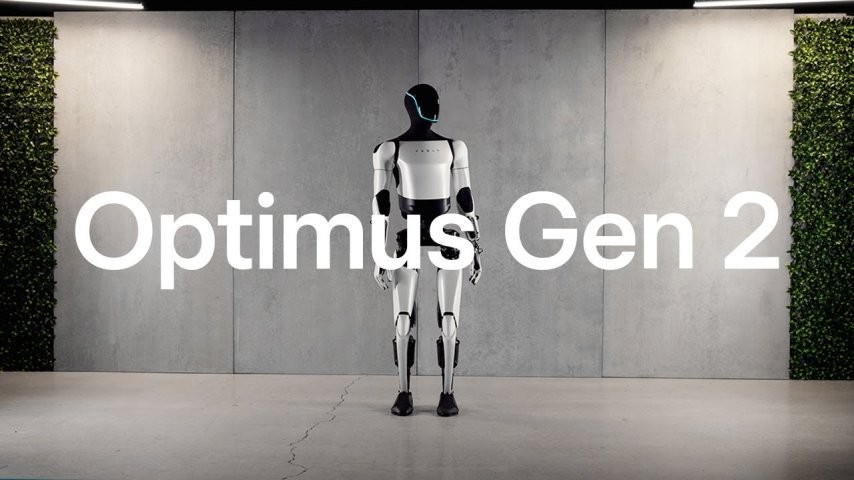Technology
Tesla’s Optimus Gen 2 Humanoid Robot Redefines the Future of Robotics!

Highlights
- Optimus Gen-2 showcases a 30% speed increase, shedding 10 kg for enhanced agility.
- Fueled by Tesla’s Dojo supercomputer, it excels in real-time decision-making and continuous learning.
- Walking on two legs, it offers superior maneuverability and navigational capabilities.
- Envisioned applications span manufacturing, logistics, healthcare, and more.
- Acknowledged as a prototype, challenges such as battery life and task complexity are being addressed.
- Anticipation surrounds its potential 2025 release, with a speculated six-figure cost.
- Ethical considerations emerge as robots inch closer to integration in homes and workplaces.
- Overall, Optimus Gen-2 marks a significant leap in humanoid robotics, poised to impact automation and human-machine interactions.
Move aside, Rosie; Tesla has stepped into the future with the grand unveiling of Optimus Gen-2, the next iteration of its humanoid robot. This cutting-edge creation promises to be faster, lighter, and more capable than its predecessor, marking a significant milestone in the realm of robotics.
Noteworthy Enhancements
Compared to its predecessor, the original Optimus prototype, the Gen-2 showcases impressive upgrades:
- Speed Boost: A 30% increase in speed.
- Weight Reduction: Shedding 10 kg for enhanced agility.
- Enhanced Dexterity: Equipped with tactile sensors in each finger, allowing it to perform delicate tasks like manipulating objects without causing damage. It can even pull off a little dance move.
Powered by AI
The true magic behind Optimus Gen-2 lies in its artificial intelligence. Running on Tesla’s Dojo supercomputer and a bespoke AI chip, the robot exhibits real-time decision-making capabilities and adapts to its environment dynamically. This not only enables immediate responses but also facilitates continuous learning, making Optimus Gen-2 a versatile and adaptive assistant.
Bipedal Locomotion
Setting itself apart from other humanoid robots that rely on wheels or tracks, Optimus Gen-2 walks on two legs. This bipedal locomotion not only enhances maneuverability but also allows the robot to navigate through rough terrains, showcasing its potential applications in various industries.
Future Applications
Tesla envisions a broad spectrum of applications for Optimus Gen-2, ranging from manufacturing and logistics to healthcare and elder care. The robot’s ability to delicately handle tasks and its capacity to learn new skills position it as a valuable asset across diverse fields.
Real-World Readiness
While Optimus Gen-2 dazzles with its advancements, it’s crucial to acknowledge that this is still a prototype. Challenges such as battery life and the ability to handle complex tasks in unstructured environments remain to be addressed. Nonetheless, Tesla’s strides with Gen-2 undeniably indicate a bright future for humanoid robots.
Unanswered Questions
As anticipation builds, key questions linger:
Availability: When will Optimus Gen-2 hit the market? Elon Musk hints at a possible release as soon as 2025.
Cost: Though Tesla has not disclosed the price, industry analysts speculate a six-figure range.
Ethical Considerations: The integration of robots into homes and workplaces prompts ethical questions, signalling a need for careful deliberation as technology advances.
In conclusion, the unveiling of Tesla’s Optimus Gen-2 marks a significant leap forward in humanoid robotics. Whether it heralds a new era of automation or transforms our interactions with machines, one thing is certain – Optimus Gen-2 is poised to leave a lasting impact on our world.





















































